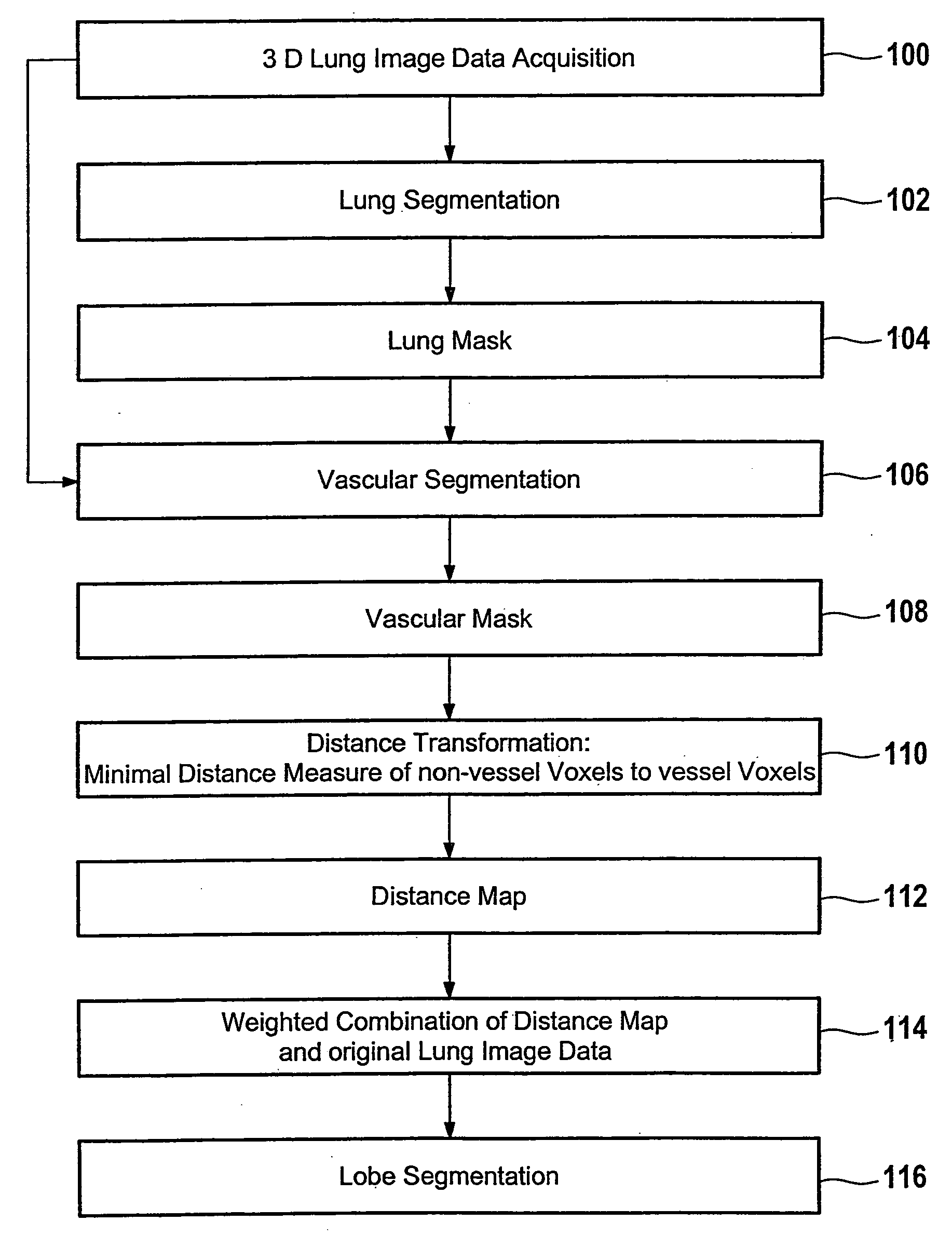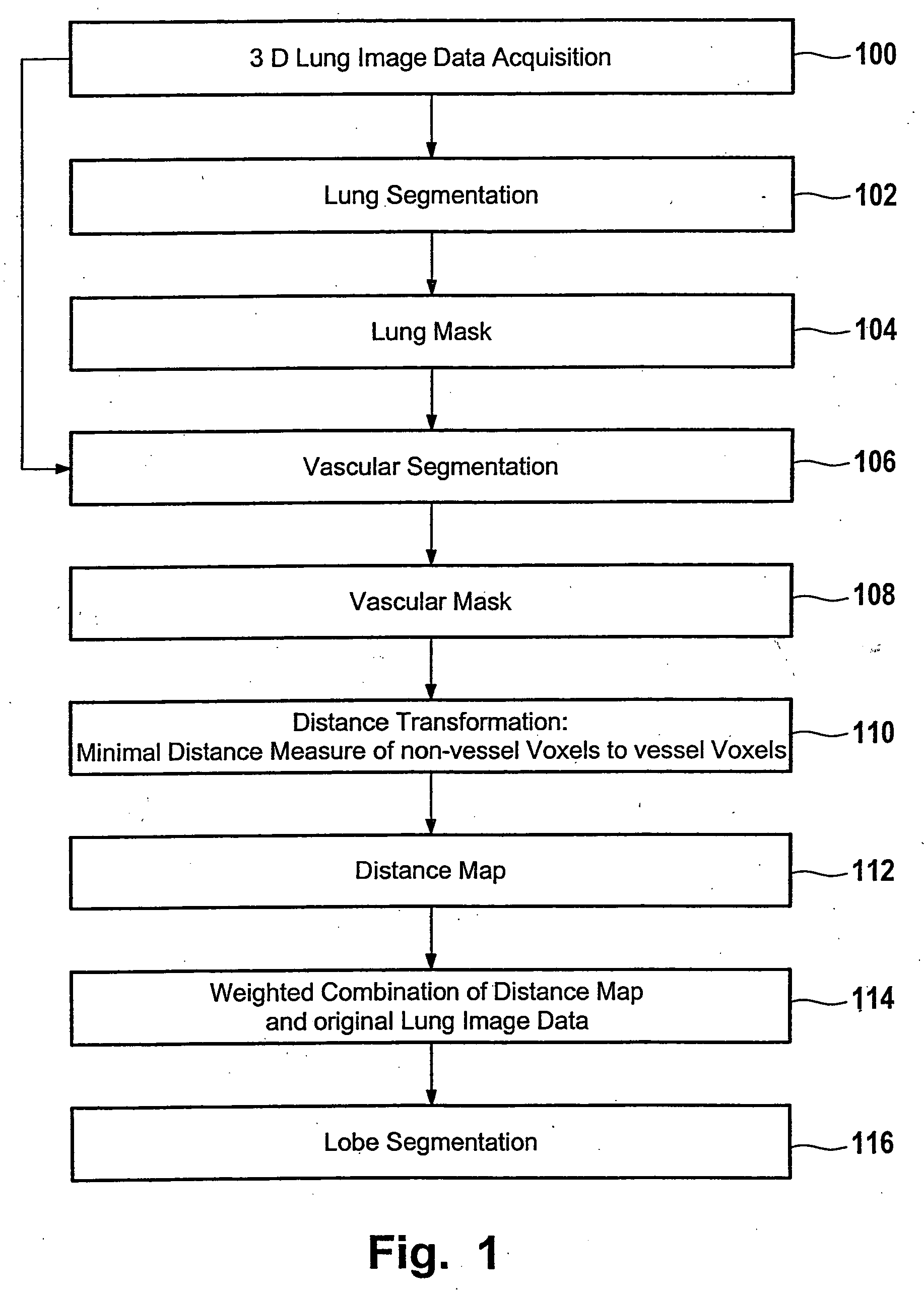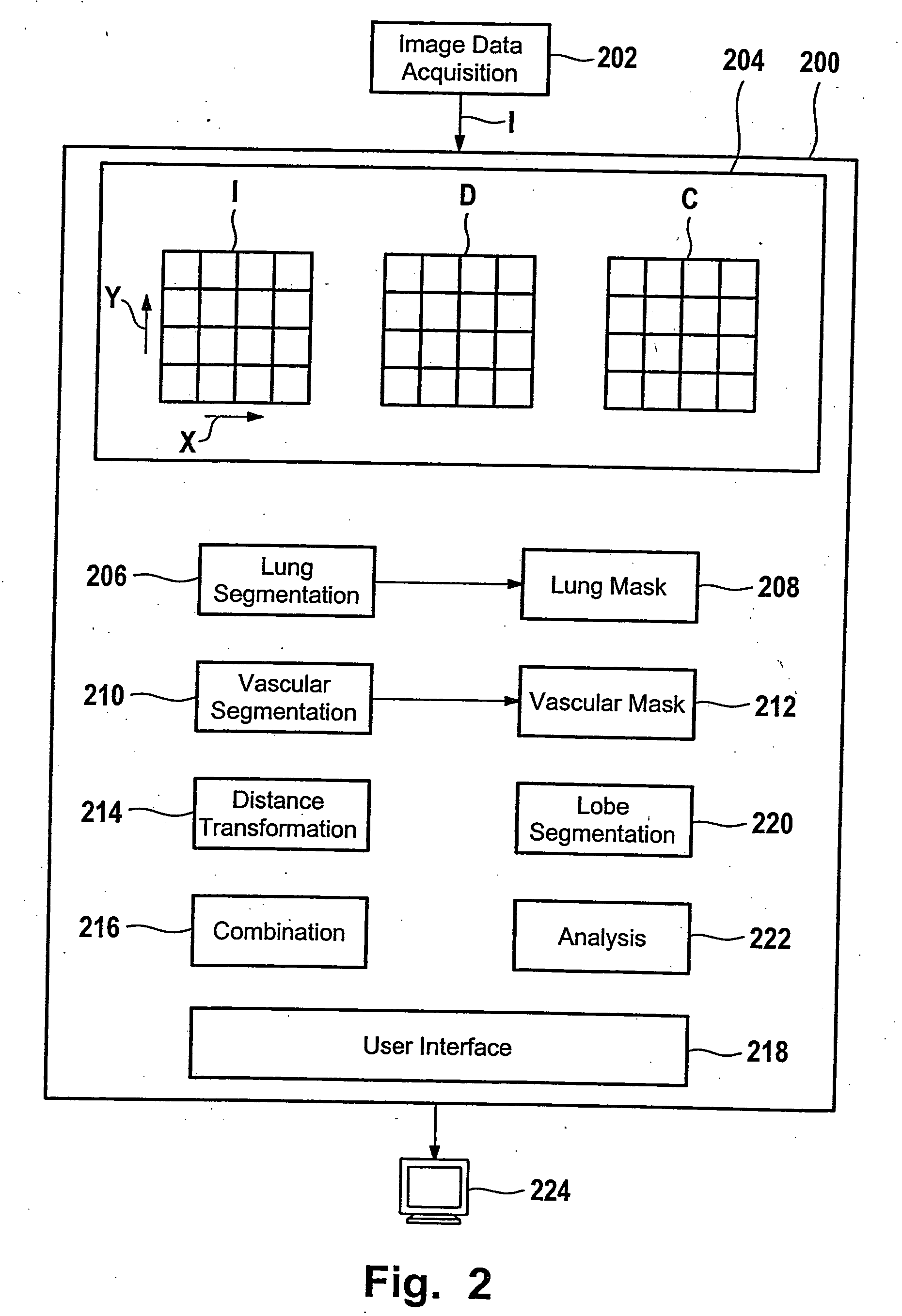Method of lung lobe segmentation and computer system
- Summary
- Abstract
- Description
- Claims
- Application Information
AI Technical Summary
Benefits of technology
Problems solved by technology
Method used
Image
Examples
Embodiment Construction
[0040]FIG. 1 shows a flow chart for lung lobe segmentation. In step 100 three dimensional lung image data is acquired by computer tomography, nuclear magnetic resonance tomography or by means of another image modality. For example thoracic image data is acquired from chest computer tomography data.
[0041] Without restriction of generality it is assumed that the image data covers an input volume V of dimensions X×Y×Z. The set of all voxel positions within the input volume is defined as V:={0, . . . , X−1}×{0, . . . , Y−1}×{0, . . . , Z−1} whilst I:=(iv)v∈V refers to the 3D input matrix. An entry iv denotes the integer density value of the voxel v within the input volume. For example, values range from 0 to 4095 corresponding to Hounsfield Units (HU) between −1024 HU and 3071 HU. In case the world coordinates of voxel v are used this in indicated by world (v).
[0042] In step 102 a lung segmentation procedure is performed on the image data I, if necessary. Performing such a lung segmen...
PUM
 Login to View More
Login to View More Abstract
Description
Claims
Application Information
 Login to View More
Login to View More - R&D
- Intellectual Property
- Life Sciences
- Materials
- Tech Scout
- Unparalleled Data Quality
- Higher Quality Content
- 60% Fewer Hallucinations
Browse by: Latest US Patents, China's latest patents, Technical Efficacy Thesaurus, Application Domain, Technology Topic, Popular Technical Reports.
© 2025 PatSnap. All rights reserved.Legal|Privacy policy|Modern Slavery Act Transparency Statement|Sitemap|About US| Contact US: help@patsnap.com



